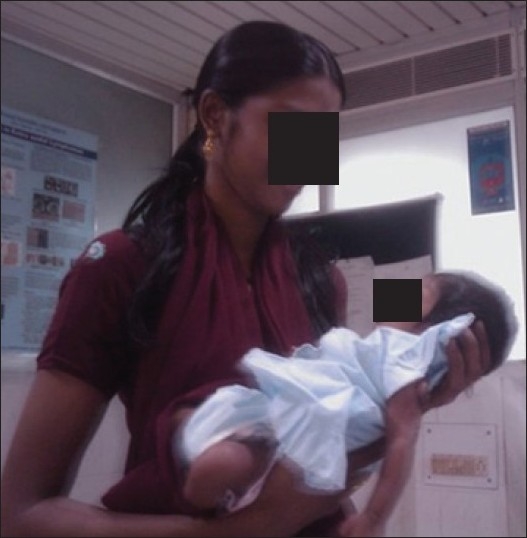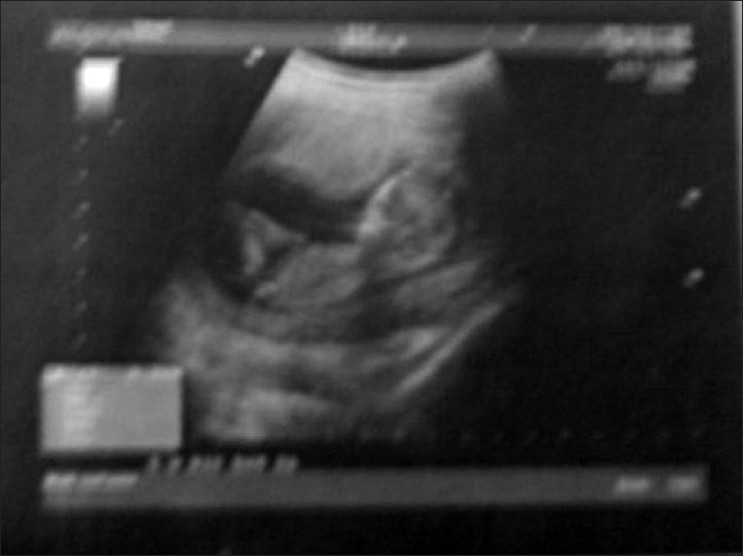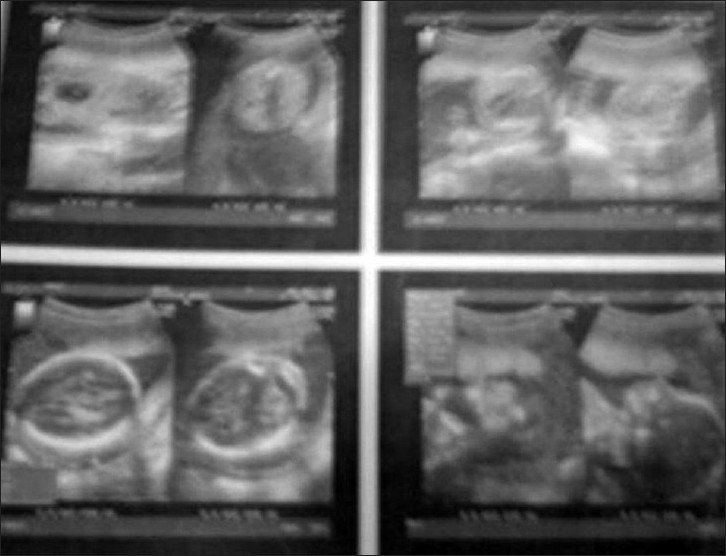An uneventful pregnancy and delivery, in a case with chronic myeloid leukemia on imatinib
CC BY-NC-ND 4.0 · Indian J Med Paediatr Oncol 2011; 32(02): 109-111
DOI: DOI: 10.4103/0971-5851.89795
Abstract
The concomitant occurrence of pregnancy and chronic myelogenous leukemia is uncommon. We describe the successful management of a 24-year-old woman in the first trimester of her pregnancy with chronic myelogenous leukemia (CML) in the chronic phase, who was on treatment with imatinib, which was stopped by 10 th week of pregnancy. Until, she completed full term of pregnancy she was on hydroxyurea. The use of imatinib did not have adverse effects on the fetus. The patient had a normal vaginal delivery and gave birth to a healthy 2500 g girl at 37 weeks of gestation. We conclude that imatinib in the first trimester of pregnant lady with CML, though has particular concern regarding the potential teratogenic and other adverse effects, has shown evidences of safe conception, pregnancy and delivery in ladies with CML.
Publication History
Article published online:
06 August 2021
© 2011. Indian Society of Medical and Paediatric Oncology. This is an open access article published by Thieme under the terms of the Creative Commons Attribution-NonDerivative-NonCommercial-License, permitting copying and reproduction so long as the original work is given appropriate credit. Contents may not be used for commercial purposes, or adapted, remixed, transformed or built upon. (https://creativecommons.org/licenses/by-nc-nd/4.0/.)
Thieme Medical and Scientific Publishers Pvt. Ltd.
A-12, 2nd Floor, Sector 2, Noida-201301 UP, India
Abstract
The concomitant occurrence of pregnancy and chronic myelogenous leukemia is uncommon. We describe the successful management of a 24-year-old woman in the first trimester of her pregnancy with chronic myelogenous leukemia (CML) in the chronic phase, who was on treatment with imatinib, which was stopped by 10th week of pregnancy. Until, she completed full term of pregnancy she was on hydroxyurea. The use of imatinib did not have adverse effects on the fetus. The patient had a normal vaginal delivery and gave birth to a healthy 2500 g girl at 37 weeks of gestation. We conclude that imatinib in the first trimester of pregnant lady with CML, though has particular concern regarding the potential teratogenic and other adverse effects, has shown evidences of safe conception, pregnancy and delivery in ladies with CML.
INTRODUCTION
In cancer during pregnancy the commonly encountered cancers are breast cancer, choriocarcinomas, leukemias and lymphomas, central nervous system tumors, cancer cervix and soft tissue tumors. The management of chronic myeloid leukemia (CML) during pregnancy poses a therapeutic dilemma because of the potential teratogenic effect of therapy. Several types of treatment have been used for CML during pregnancy including cytotoxic drugs, alpha interferon and leukapheresis. Hydroxyurea (HU) is thought to have the lowest mutagenic potential among the cytotoxic agents. We describe the successful management of a patient with CML in the chronic phase on imatinib during the time of conception after which was switched over to HU throughout her pregnancy and had a successful pregnancy and delivery with a healthy female child.
CASE REPORT
A 24-year-old patient known case of CML was on treatment with imatinib for the past 4 years. One year ago, while she was on imatinib, she missed her periods and her pregnancy test was positive. She was keen to continue her pregnancy. On examination, she was found to have an intrauterine pregnancy of 6 week gestation and a spleen palpable 3 cm below the left costal margin. The patient did not have a HLA-matched donor hence the possibility of allogenic PSCT was not possible.
The patient was admitted to the hospital, and informed consent was obtained for continuing pregnancy with treatment on switch therapy from imatinib to HU in the 10th week of her pregnancy. Until the first trimester, the patient was on hematological response. After the 10th week of pregnancy, she was started on tab. HU 500 mg QID (2000 mg) and on regular antenatal checkup. The blood tests done at the end of second trimester showed an increased TC of 50000 cells, hence the patient was asked to increase the HU dose from four to five tablets per day (2500 mg per day). The subsequent counts were under control. All the antenatal scans taken in the first, second and third trimesters were normal. Labor was induced at 37 weeks of gestation. Patient had a full-term normal vaginal delivery. There were no perinatal complications. Macroscopic examination of the placenta was normal. The baby was 2.5 kg healthy female baby without any congenital abnormalities [Figures [Figures11–4]. The infant's examinations and blood count were normal. Breast feeding was given for 2 days and then the patient was asked to stop breast feeding. The patient was asked to stop tab. HU and resume tab. imatinib 400 mg per day. The patient is now in hematological response. The baby's growth and development have been normal till date (1 year).

| Fig. 1 CML in pregnancy – USG abdomen picture in I trimester pregnancy

| Fig. 4 CML in pregnancy – clinical picture of mother and child after pregnancy

| Fig. 2 CML in pregnancy – USG abdomen picture in II trimester pregnancy

| Fig. 3 CML in pregnancy – USG abdomen picture in III trimester pregnancy
DISCUSSION
The management of pregnancy associated with a neoplastic disease is challenging. There are many side effects that arise due to most cytotoxic agents and radiotherapy, when a woman becomes pregnant during or shortly after receiving chemotherapy or radiotherapy.[1–3] The incidence of CML associated with pregnancy is estimated to be 175000.[4] Around less than 50 cases of CML with pregnancy have been reported in the literature of which less than 30 patients have had uneventful pregnancy delivering healthy babies.[1–3,5] The effects of cytotoxic drugs on the fetus may be studied from two perspectives, namely immediate effects, such as abortive and teratogenic effects, and late effects such as gonadal, endocrinological disorders, growth and development problems.[1–3,5]
Conventional therapeutic options of chronic phase CML include HU, busulfan, interferon-based regimens and stem cell transplantation, with stem cell transplantation being the only curative therapy.[6,7] Both HU and busulfan inhibit DNA synthesis and therefore have the potential to cause abortion, intrauterine growth retardation and congenital malformations. However, neither teratogenic effects nor hematologic consequences to the fetus have been reported with HU treatment.[8] Busulfan crosses the placenta and causes severe stunting of growth and gonadal aplasia in the offspring of pregnant rats.[7,8]
Through rational drug development, imatinib mesylate, Gleevec (formerly STI571; CGP-57148B), a Bcr-Abl tyrosine kinase inhibitor, offers a new hope for expanded options for patients with CML. Imatinib entered clinical trials in 1998 and has since been shown to induce dramatic hematologic and cytogenetic responses.[2,9–11] The mechanism of action is such that it inhibits Bcr-Abl tyrosine kinase, the constitutive abnormal gene product of the Philadelphia chromosome in chronic myeloid leukemia (CML). Inhibition of this enzyme blocks proliferation and induces apoptosis in Bcr-Abl-positive cell lines as well as in fresh leukemic cells in Philadelphia chromosome-positive CML. Also it inhibits tyrosine kinase for platelet-derived growth factor (PDGF), stem cell factor (SCF), c-Kit, and cellular events mediated by PDGF and SCF.
In preclinical studies, imatinib was teratogenic in rats, and impaired spermatogenesis occurred in rats, dogs and monkeys. Therefore, it is recommended that women treated with imatinib should be aware of the potential teratogenicity of imatinib and effective contraception should be used during imatinib therapy to prevent pregnancy. Imatinib and its active metabolite are found in human breast milk; the milk/plasma ratio is 0.5 for imatinib and 0.9 for the active metabolite. Based on body weight, up to 10% of a therapeutic maternal dose could potentially be received by a breastfed infant. Due to the potential for serious adverse reactions in the nursing infant, breast feeding is not recommended. There are no contraindications listed within the Federal Drug Administration (FDA) -approved manufacturer's labeling. There are no data concerned with continued imatinib therapy during pregnancy.[11]
α-Interferon has been used for the treatment of CML with variable success.[1,2] Though leukapheresis has been successfully used in both acute and chronic leukemia for the rapid reduction of high WBC counts in patients with impending vascular occlusion, it is not currently recommended as maintenance therapy for these diseases.[5]
In conclusion, in light of other successfully treated cases reported in the literature and our own, we would suggest that the use of imatinib can be considered for treatment of CML as early as the first trimester of pregnancy and that it may be successfully continued throughout the pregnancy. Further studies may be needed to prove the safety profile of imatinib on fetus in CML with pregnancy on imatinib during the first trimester with the main aim of a healthy mother and a healthy infant in both the short- and long-term.
Footnotes
Source of Support: Nil,
Conflict of Interest: None declared.
REFERENCES

| Fig. 1 CML in pregnancy – USG abdomen picture in I trimester pregnancy

| Fig. 4 CML in pregnancy – clinical picture of mother and child after pregnancy

| Fig. 2 CML in pregnancy – USG abdomen picture in II trimester pregnancy

| Fig. 3 CML in pregnancy – USG abdomen picture in III trimester pregnancy


 PDF
PDF  Views
Views  Share
Share

